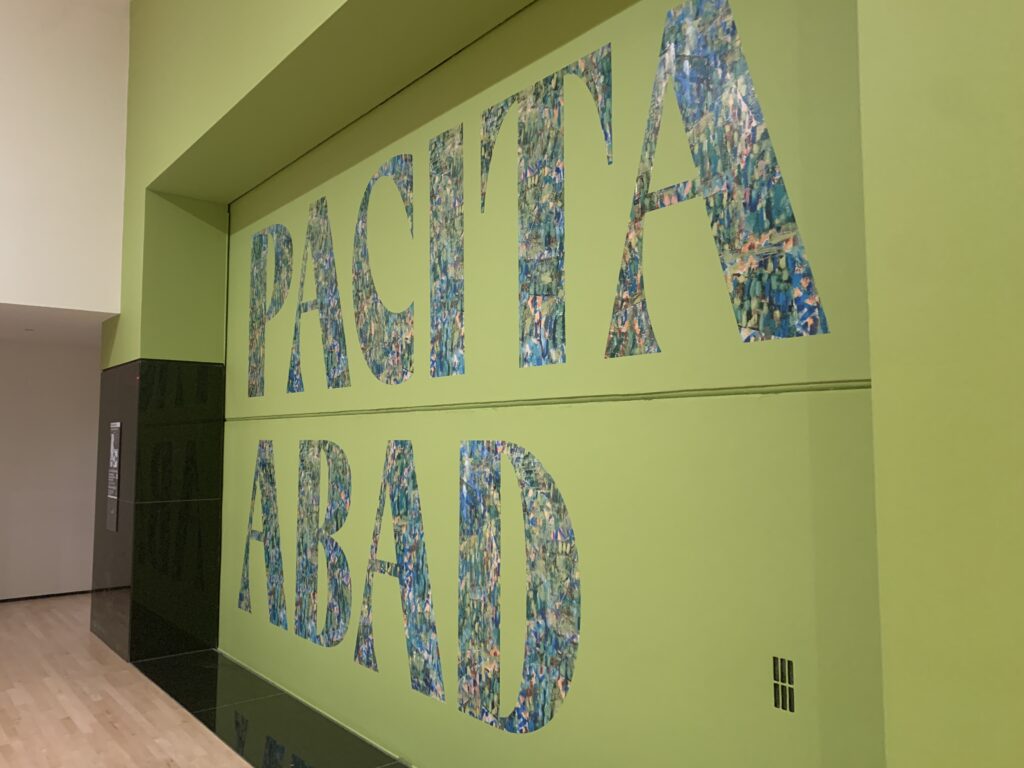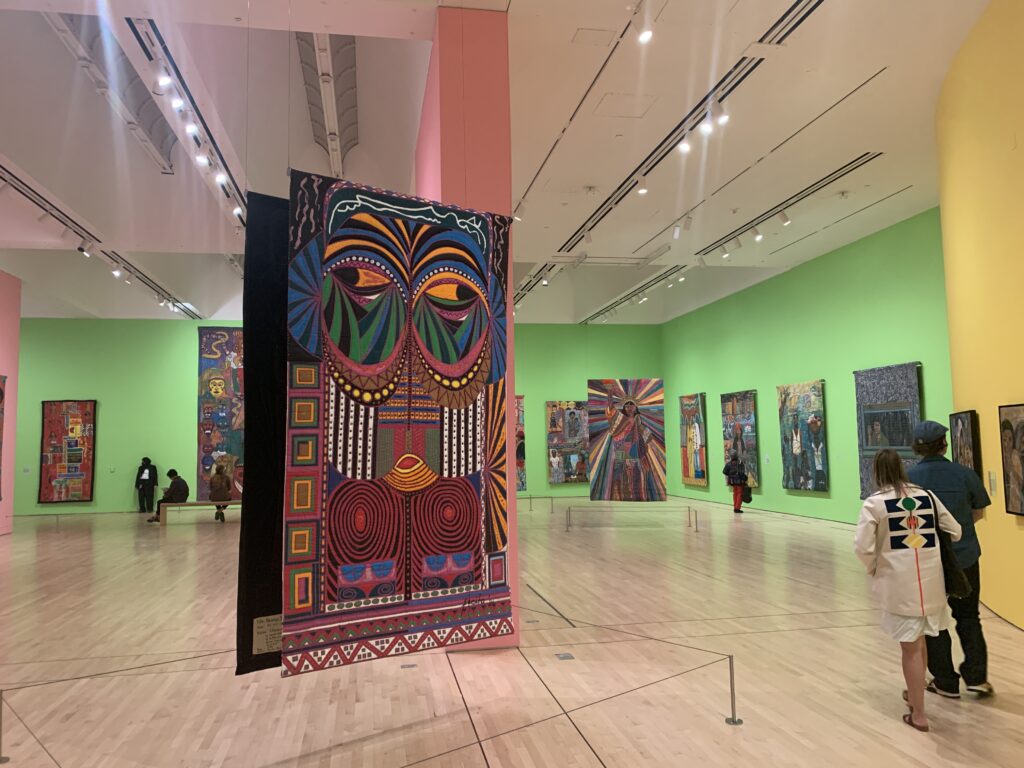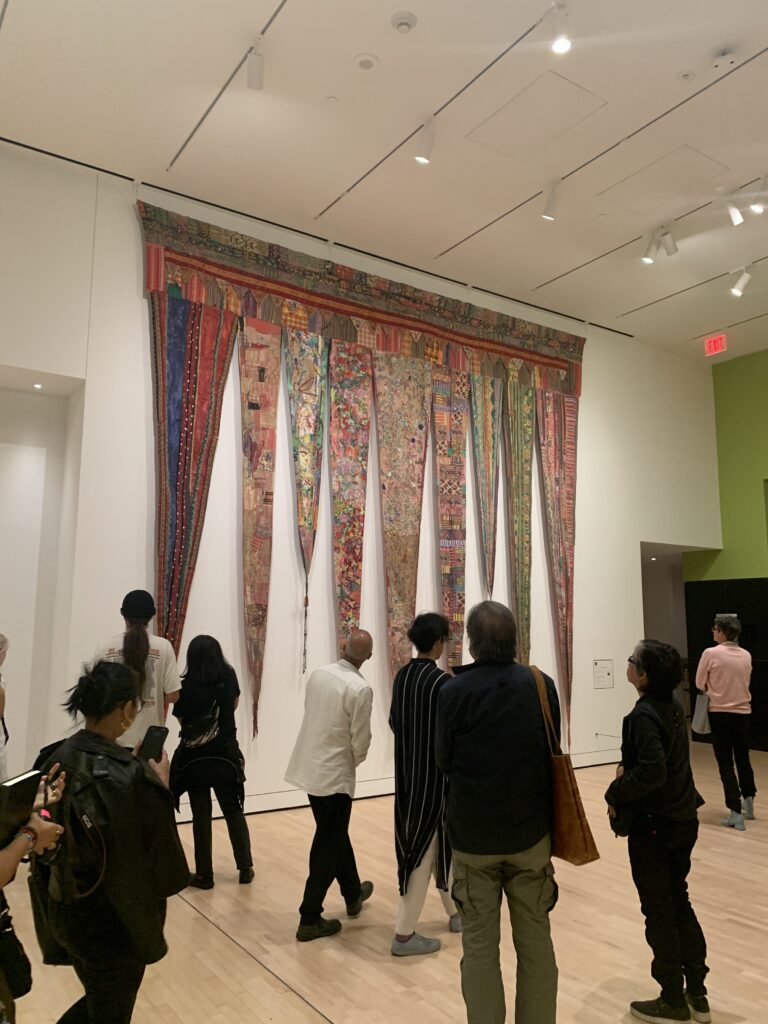By: Kyrie Sismaet
San Francisco, CA – October 19– In an enlightening and inspiring evening at the San Francisco Museum of Modern Art (SFMOMA) on Thursday, October 19, acclaimed playwright Jessica Hagedorn took the Phyllis Wattis Theater stage for a remarkably insightful conversation with renowned artist Paul Pfeiffer. Moderated by Eungie Joo, the talented pair delved into a profound discussion surrounding the museum’s new exhibition showcasing the works of Pacita Abad and the broader landscape of diasporic Filipino art during the 1970s and 1980s.
The event commenced with Hagedorn expressing her admiration for Pacita Abad, an iconic Filipina-American artist whose vibrant and innovative artworks have gained international acclaim. The ongoing exhibition at SFMOMA serves as a testament to Abad’s artistic prowess and her ability to capture the essence of Filipino culture while embracing the diverse experiences of the mid-century American diaspora.

As the conversation unfolded, Hagedorn and Pfeiffer passionately explored the significance of Abad’s works within the context of intergenerational art and activism. They highlighted the pivotal role played by artists like Abad and themselves in bridging the cultural gaps between their homeland and the adopted countries they found themselves in. Hagedorn eloquently described Abad’s art as a powerful narrative that transcends geographical boundaries, offering a unique perspective on the complexities of identity, displacement, and belonging before elucidating her own diasporic journey and artistic development.
“I was very educated, but very ignorant, and I made a choice. We landed here, and my mother chose to live here,” Hagedorn mouths “thank god” amusingly to a captivated crowd. During political uprisings, Hagedorn became galvanized as an artist, and was motivated to take action.”During the tumult, I saw people who looked like me marching the street, she recalls. And when I started taking up poetry, my eyes were opened and that is a choice you make.”

One of the central themes that emerged from their eloquent conversation was the interplay of identity and artistry within the Filipino diasporic experience, particularly in the Bay Area. Hagedorn, drawing from her own experiences, emphasized the importance of storytelling in preserving the rich cultural heritage of the Filipino people and the local community. “When I landed here, the city was in shambles, but I think the shambles are good,” she reminisced fondly, lauding the infamously nonconformist culture the cities of New York and San Francisco are known for. She cherishes how active the Bay Area is for progressive moments, and emphasize the need for contemporary artists to continue this empowering essence.
Paul Pfeiffer, whose work often explores themes of identity and representation, added valuable insights into the discourse, especially on what the politics are to being Filipino-American. “Here’s what I think- it’s an important distinction- the specificity of how politics is conducted in the U.S., the Filipino-American thing, the Filipino thing, and the historical context for them. On the one hand, I feel that the trope that defines Filipino-American politics is the politics of visibility. To become visible is to have agency.”

Their discussion not only shed light on the trailblazing brilliance of Pacita Abad’s work but also served as a celebration of diasporic resilience and creativity, and as a call-to-action for this current generation to continue such efforts. Hagedorn’s final words in that discussion were, “we’re hyperaware of what’s going on in the world, and that’s what’s different now,” Hagedorn empowers as she concludes the discussion. “It’s really about what do you want to do. It’s going to be hard, but we must try.” Moderator Eungie Joo offered her guidance as well, urging to the audience, “we’re passing the baton to you and yes anything’s possible, and we await your generation’s response.”
After the discussion, attendees were invited to leisurely view the new exhibit located on the fourth floor, which is a massive gallery that immerses viewers in Abad’s vivid world of bright colors and thought-provoking statements with her iconic Trapunto paintings . The conversation between Jessica Hagedorn and Paul Pfeiffer served as a beacon, guiding art enthusiasts and scholars alike toward a deeper understanding of the profound impact of Filipino artists on the global art landscape during Filipino Heritage Month.
Pacita Abad’s Retrospective is open for viewing at the SFMOMA from October 21, 2023 to January 28, 2024.
































